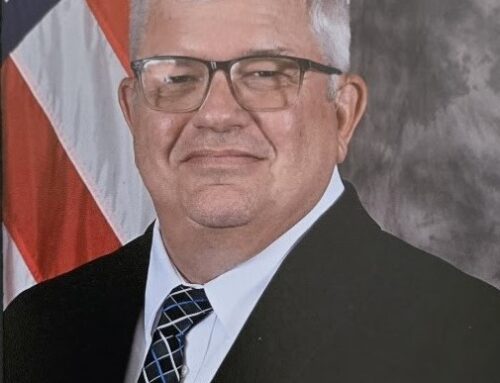BY BEN WHEATLEY
A woman was walking in the crosswalk of a busy intersection as the rain started to come down. She looked cold, but more than that, she looked off. She had no shoes on her feet and her countenance was in disarray. It seemed to me that she was in the midst of a mental health crisis.
The woman approached where I was standing and I suggested that she go into the Starbucks on the corner to look for her shoes. At least in there, it would be warm. She didn’t go inside, but instead went to the entrance and sat down on the ground.
Someone must have called 911 because a policeman and an ambulance with an emergency medical technician showed up. The EMT brought a stretcher down from the ambulance as the policeman watched over the situation. The woman got on the stretcher and the EMT placed a blanket over her. As this played out, the policeman stood in the background, allowing the EMT to take primary responsibility for the interaction. Since the woman seemed to pose little risk to herself or others, the response seemed to be the appropriate one.
In recent months, mental health advocacy groups and others have sought to limit the role of police in mental health crises. They note that “Mental illness is a health condition, not a crime, and health practitioners should respond to crisis calls, not law enforcement.” This is especially important because interactions between the police and the mentally ill have at times proven deadly. According to the National Sheriff’s Association, “The increasing number of confrontations between law enforcement officers and persons with serious mental illness [have led] to some unfortunate outcomes. Among the most tragic are officer-related shootings of the mentally ill individuals, many of which are fatal.”
The New 911 for Mental Health Crises
Beginning in July 2022, a new 3-digit telephone number (988) will be implemented to address mental health crises, cases involving substance use disorder (SUD), and individuals in emotional and/or suicidal distress. Many believe that 988 can serve as the basis for a reimagined crisis response system.
988 originated as part of an effort to combat rising suicide rates. Calls placed to 988 will be routed to local call centers of the National Suicide Prevention Lifeline (NSPL). The 3-digit number is designed to make it easier for those in distress to reach help when they need it most, rather than having to remember the current 10-digit number.
For those in suicidal distress, just having someone to talk to is often enough to address the crisis. According to the Suicide Prevention Lifeline, “Numerous studies have shown that callers feel less suicidal, less depressed, less overwhelmed and more hopeful after speaking with a Lifeline counselor.”
However, there are some cases that are more serious in nature and call takers may assess the person as being at “imminent risk” of suicide. In those cases, calls may be transferred to 911 and police may be dispatched to the caller’s location. The Lifeline seeks to utilize involuntary methods of suicide prevention only as a last resort.
According to the Lifeline, “Some crisis center staff members report reluctance to call 911 for fear [that] local law enforcement officials [will] resort to inappropriate force, arrest, or other…undesirable outcomes for the caller in need of care.” However, critics of the NSPL allege that crisis center staff may “call the police pretty quickly…[because they get] really panicked [and feel] like it would be their fault if the person killed themselves.” This tension illustrates the potential push and pull that may come to exist between 911 and 988—including the appropriate role of police.
Police Involvement in Mental Health Crises
Though it makes sense to say that mental health conditions should be treated as matters of health care, not criminal justice, the assertion becomes more difficult when tested against specific cases. For example, I am familiar with one case from twenty years ago involving a man who was experiencing psychotic delusions. He believed that the gym in his apartment building was an imaginary “Holodeck.” Wikipedia describes a Holodeck as “a fictional device from…Star Trek which uses ‘holograms’ to create a realistic 3D simulation…in which participants can freely interact with the environment as well as objects and characters [in] a predefined narrative.” He believed that the Holodeck was set up to show him “how to meet women in bars.”
When he visited the gym in his psychotic state, there were two women working out, one on a treadmill, the other on the weights. He leaned against the wall behind the woman on the treadmill—already acting strangely. He wasn’t fully convinced that he was actually in a Holodeck, so he tested reality by using his index finger to poke the woman on her shoulder. In doing so, he committed assault. The cops came and took him to the police station in handcuffs. At one point while there, he said something or did something—or didn’t do something—that caused the cops to forcibly take him to the ground, face down, with the knees of several officers on his back and legs. He didn’t resist. However, later he went on a loud and lengthy rant. In one memorable line, he yelled: “Noah’s Ark is going over Niagara Falls, are you in or are you out?” He spent a month in an inpatient psychiatric facility. Subsequent to that, he received a year of probation for the misdemeanor assault.
Though we can talk about a paradigm shift that recognizes mental health conditions as matters of health care, rather than criminal justice, this case shows how difficult it can be to extricate one from the other. In this case, there was a direct link between the delusional thought and the criminal action. In claiming that law enforcement should take a secondary role in mental health crises, we are saying that legitimate criminal complaints such as this one will not be charged or adjudicated. That seems unlikely. When we come to a specific, real-life example of mental health crisis, the notion of secondary police involvement seems much more difficult to achieve.
This example demonstrates how the behavior of the mentally ill can push the limits of our empathy and understanding. Nevertheless, to address the mental health challenge that we face, more understanding is required. To quote Alisa Roth from The Atlantic, “In order to truly fix our broken approach to mental illness, there needs to be a change in attitude: one that goes from seeing people as inherently dangerous to treating them as human beings in need of help.” This change can move us toward decriminalization.
Ben Wheatley is a senior health policy advisor with Kaiser Permanente.






Leave A Comment